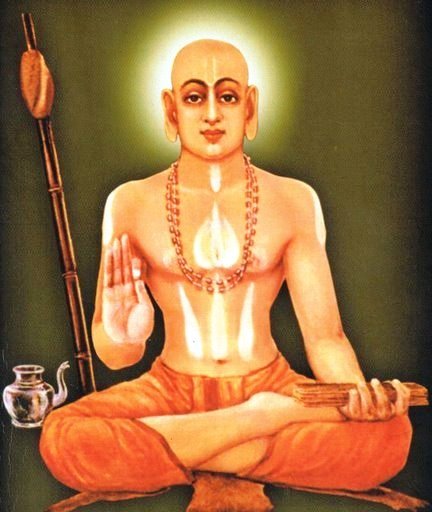Madhvacharya was an Indian philosopher, theologian, and the chief proponent of the Dvaita (dualism) school of Vedanta.
He founded the Dvaita School of Vedanta and called the philosophy ‘Tattvavada’.
He was born in 13th-century India on the west coast of Karnataka state. As a teenager, he became a Sanyasi (monk) joining Brahma-sampradaya guru Achyutapreksha, of the Ekadandi order.
Madhva studied the classics of Hindu philosophy and wrote commentaries on the Principal Upanishads, the Bhagavad Gita, and the Brahma Sutras ( Prasthanatrayi ), and is credited with thirty-seven works in Sanskrit. His writing style was of extreme brevity and condensed expression.
Madhvacharya’s greatest work is considered to be the Anuvyakhyana, a philosophical supplement to his bhasya on the Brahma Sutras composed with a poetic structure.
What is the Dvaita school of Vedanta?
Dvaita Vedanta ( / ˈdvaɪtə vɪˈdɑːntə / ); (originally known as Tattvavada; IAST: Tattvavāda ), is a sub-school in the Vedanta tradition of Hindu philosophy. The term Tattvavada literally means “arguments from a realist viewpoint“.
Madhvacharya believed in three entities: God, jiva (soul), and jada (maya, matter). The Dvaita Vedanta school believes that God and the individual souls (jīvātman) exist as independent realities, and these are distinct, being said that Vishnu (Narayana) is independent (svatantra), and souls are dependent (paratantra) on him.
How does Dvaita Vedanta view the concept of Maya?
In Dvaita Vedanta, Maya is considered as one of the three entities: God, jiva (soul), and jada (maya, matter). The Dvaita Vedanta school believes that God and the individual souls (jīvātman) exist as independent realities, and these are distinct.

